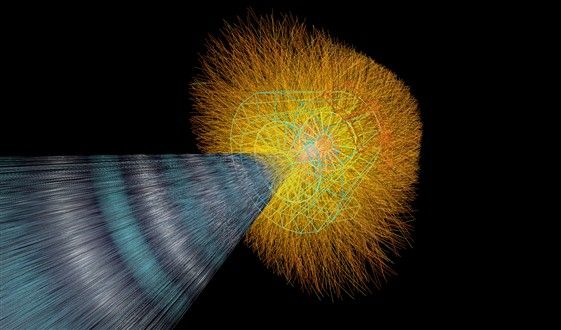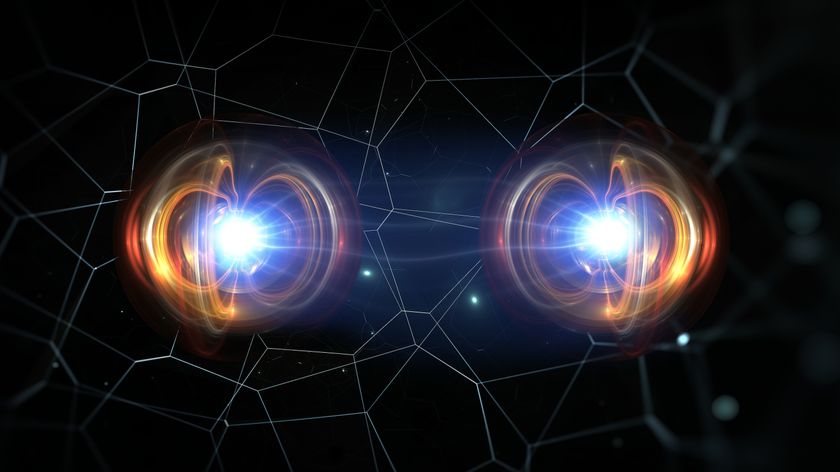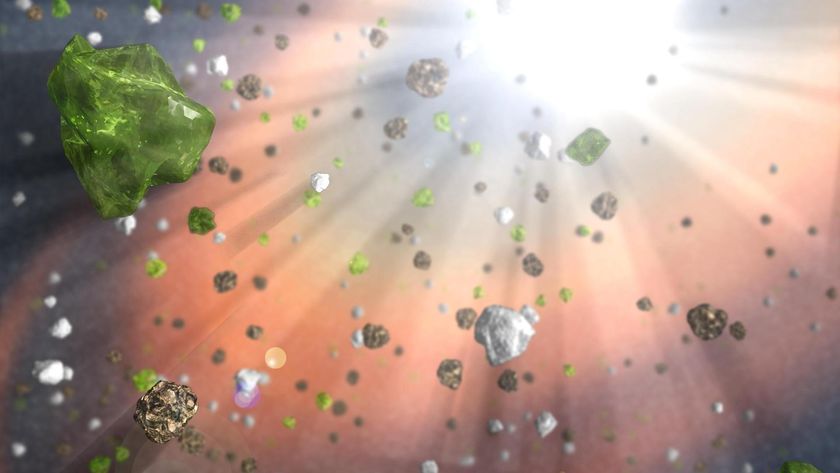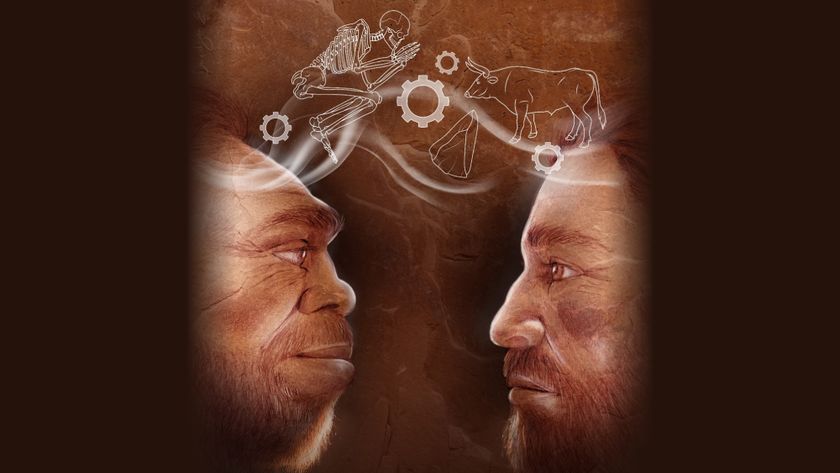New Subatomic Particle or Fluky Pattern? 3 Tests Will Tell

The announcement this week that scientists may or may not have discovered a new subatomic particle has riled up the physics world. So how do we know for sure whether the particle is real or not?
A number of tests in the coming months should point the way:
Get more data
The signal comes from the Tevatron particle accelerator at the Fermilab physics laboratory in Batavia, Ill. Scientists noticed a bump in their data — an overabundance of a certain pattern that was not predicted, which could indicate the presence of a never-before-seen particle, scientists say. [Particle Discovery Has Physicists Abuzz]
The catch is, the pattern could represent a real physical phenomenon, or it could be a statistical anomaly. Scientists say there's a 1 in 1,000 chance the finding is just a fluke. To get a better idea of whether the signal is real, researchers need to sort through more data.
Inside the Tevatron, protons and their antimatter partners, antiprotons, are accelerated in a giant ring until they crash into each other at near the speed of light. In the ensuing explosions, many different combinations of exotic particles are created.
The new result, found at the Tevatron's Collider Detector at Fermilab (CDF), hinges on detecting a couple of hundred extra, unexpected instances of a particular combination of products. Such a finding could indicate that an unknown particle is being created in these collisions.
Sign up for the Live Science daily newsletter now
Get the world’s most fascinating discoveries delivered straight to your inbox.
If researchers could find more cases of this pattern, the result would hold more weight.
"It is much too early for this observation to be considered an established discovery," said physicist Gavin Salam of the CERN physics laboratory in Geneva, Switzerland. "Over the past decade there have been a number of particle-physics anomalies whose statistical significance was similar to this one, yet which, on accumulation of new data and subsequent reanalysis, turned out merely to be due to fluctuations of the data or incomplete estimates of the sources of background contamination."
There is a reasonable hope that the Tevatron's CDF experiment itself will produce enough extra data to make the picture clearer. The atom smasher, which has been operating since the 1980s, recently was fine-tuned to produce really large numbers of collisions.
"It's only in the last few years that the Tevatron has gotten this huge data sample," said physicist Michael Peskin of the SLAC National Accelerator Laboratory in Menlo Park, Calif. The machine is currently operating at such a peak of productivity that it should have a significantly larger haul of data later this year, he said.
The Tevatron is in a race against time, though. A budget shortage is expected to shut it down in September.
Try Tevatron's other experiment
And if the CDF experiment can't produce proof of the new particle, physicists may have to look no further than the other experiment at Tevatron, called DZero (D0), which detects collisions at another point along the ring.
"Only the CDF experiment at the Tevatron has analyzed enough data to see this effect," said Northwestern University physicist Frank Petriello. "We are waiting for confirmation from D0, and also for further studies to make sure this isn't a subtle mistake in our modeling of already-known physics."
DZero should be just as capable as CDF of detecting this particle, if it exists. But since the two experiments collect totally separate data, a similar finding at DZero would lend considerable weight to the new particle hypothesis.
"DZero should be able to see this just as well," Peskin told LiveScience. "If it's real, it's definitely a new particle and of a very interesting type. It's very tantalizing, but I don't believe it yet."
Look to the LHC
If DZero can't shed some light on the situation, then the world's largest atom smasher should be able to.
The Large Hadron Collider (LHC) at CERN is the newest, biggest particle accelerator around. It's not at full speed yet, but it's already producing exciting science results. Given more time, the LHC should be able to produce even more collisions than the Tevatron.
The LHC also has multiple experiments running, including two — called ATLAS and CMS — that should be able to detect the new particle, if it exists.
"Not only might the D0 experiment be able to check this claim, the ATLAS and CMS LHC experiments should soon be able to go much further," said physicist Matthew Strassler of Rutgers University. "This is part of why the CDF collaboration needed to publish this result now."
By sharing their results with the rest of the physics community, the CDF scientists are inviting precisely the scrutiny such a bold claim requires.
Hopefully, the rest of us won't be kept in the dark for too long. Who knows, we may have a new entry to incorporate into the growing panoply of the known particles that make up our universe. [Strange Quarks and Muons, Oh My! Nature's Tiniest Particles Dissected]
You can follow LiveScience senior writer Clara Moskowitz on Twitter @ClaraMoskowitz. For more science news, follow LiveScience on twitter @livescience.












